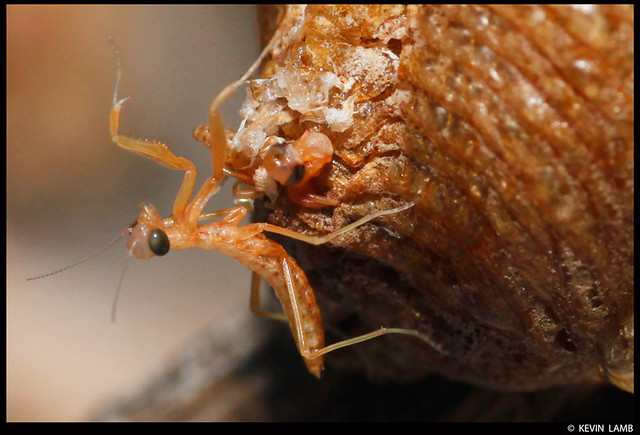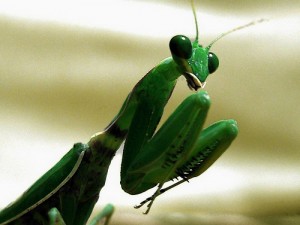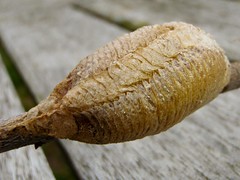
What is this crazy-looking insect? It's a praying mantis! You may have never seen one in your life! Why? It's not that it's rare, it's simply a trick of good camouflage! It is likely that there is one sitting on your lawn or in your garden right now! That is, if you don't use pesticides. Pesticides exterminate the bad insects, such as aphids and caterpillars, but they also kill the helpful ones. Praying mantises are helpful, and will eat any insect that crosses its path. From the picture, you probably noticed those menacing-looking claws with slicing spears. A praying mantis will strike its prey at lightning-speed with these and eat its meal off the spikes that skewer the prey.
Here are some ways to help praying mantises:
You probably guessed that you shouldn't use pesticides. Just leave the job to the praying mantises! The patch of grass you are using for grasshoppers can be used for praying mantises.
What if a predator does see a praying mantis through its camouflage? The praying mantis still has a defense. It will spread its wings, bear its claws, and make a hissing noise, similar to that of a cat! Of course, it could also flee. However, such camouflage could also have drawbacks. How do male and female praying mantises find each other? They can use pheremones, or simply rely on bumping into each other! Once they mate, the female will eat the male and lay eggs. Eggs are typically deposited in a frothy mass that is produced by glands in the abdomen. This froth then hardens, creating a protective capsule. The protective capsule and the egg mass is called an ootheca. Depending on the species, the ootheca can be attached to a flat surface, wrapped around a plant or even deposited in the ground!
An ootheca
 |
| The first moments out of the ootheca |


No comments:
Post a Comment